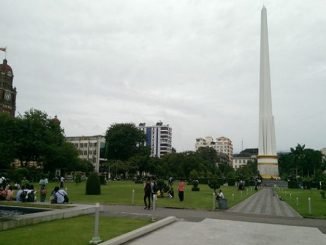
A quarter (24.1 percent) of people living in eight of Yangon’s poorest townships have often not had any income in the last 12 months, a new UNDP report shows. The report found people living in these eight areas are worse on every economic and social indicator when compared to the rest of Yangon.
This is forcing people to adopt coping strategies that threaten their health and wellbeing, including cutting down on how much they eat and consuming less nutritious food, selling assets, such as vehicles, and forgoing medical treatment.
The collapse of the economy in 2021 and only very modest growth last year has had a devastating impact on Yangon’s urban poor. Foreign investors pulling out of Myanmar, leading to the closure of businesses and factories, has severely reduced both working hours and employment opportunities, while rising food and fuel prices have further squeezed people’s spending.
More than two-fifths (43.4 percent) of respondents from the eight townships reported selling assets in the last 12 months. When these assets are used to generate income, such as vehicles, it can make it even more difficult to earn money and recover.
One of the most extreme coping mechanisms was how families interrupted their children’s education in order to work, cited by a quarter of households in the eight surveyed townships who had reported taking their children out of school since March 2020. These lost years of education will impact their ability to seek better employment in adulthood.
Source (read more): https://unsdg.un.org/latest/stories/quarter-residents-yangons-poorest-areas-often-go-without-income-0
